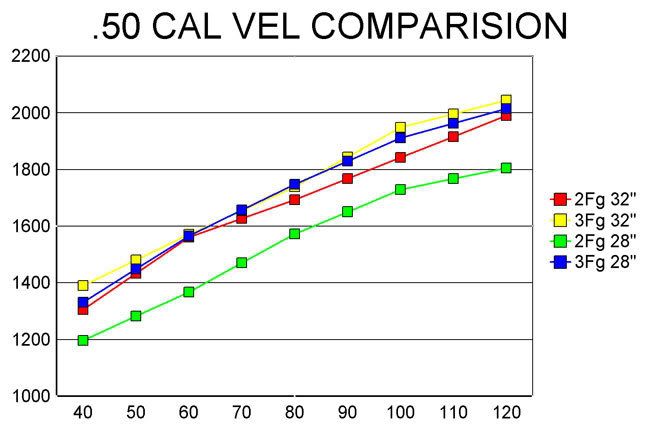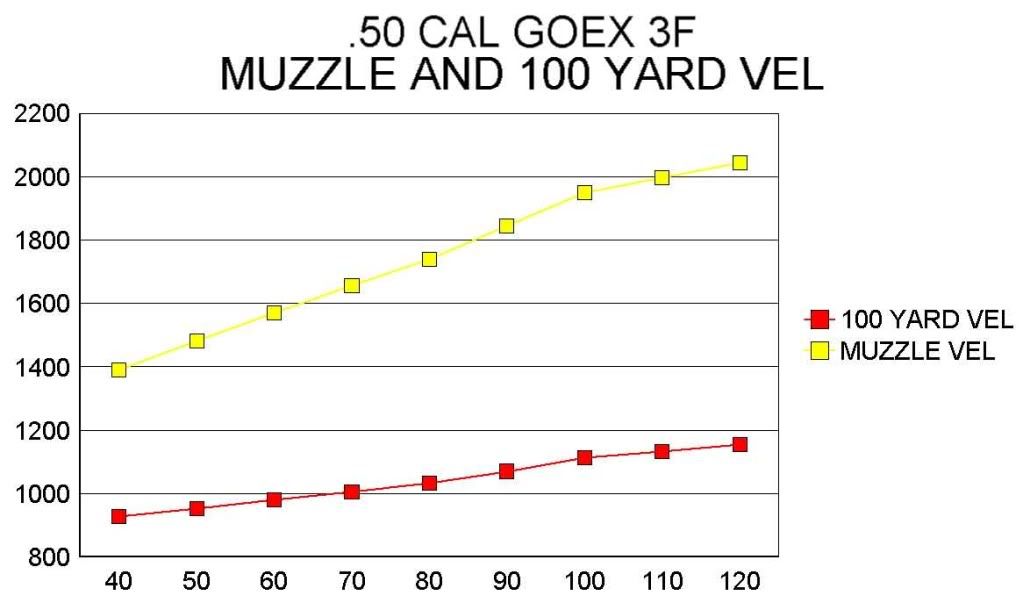There is a law of aerodynamics that goes something like, "whatever goes out faster into air, slows faster, too". Your chart shows that you can get more Muzzle Velocity by loading those huge powder charges. But, if you were to look at down range velocities, you will see that most of the Added velocity is lost within 50 yard, and so little is left at 100 yds, that you are well within the SDV for any given caliber at that range. Under these circumstances, all you have succeeded in doing is emptying your pocket book a bit faster, and increased the pounding of your shoulder considerably, for little gain down range.
When you go past 100 yds, the RB looses velocity so fast, and drops so steeply, that you can't Hold IRON SIGHTS well enough to tell the difference between a reasonable load, and those "magnum loads" of Black powder.
The fact that more powder will produce more velocity at the muzzle is rather academic, and has no real merit out in the field.
You can see this with a simply test in your living room, using balloons as projectiles:
1. Blow up 3 balloons the same size in diameter.
2.Now, take one balloon and throw it as Hard as you can, using an overhand arm swing, as if you were throwing a Major league baseball. Mark the floor with a pillow, tape, pencil, etc. where it lands. Repeat this three times to get an average.
3. Now, do the same test, but throw the balloon gently- as gently as you can push it. Mark the floor.
4. Now throw the balloon a medium velocity and mark where it lands.
You should find that the balloon lands further than the first Hard thrown balloon.
5. Now, to understand drag factors, and why more velocity doesn't necessarily give you more velocity down range, take the 3 balloons, held together, by their ties, and repeat these three tests, hard and fast, slow, and medium. Mark the floor where all three balloons land.
This give you an idea of what happens to shotgun pellets when fired from a gun, too. The hard and Fast velocity forces the balloons to come up short, and disperse widely. The Slow keeps the balloons together, but they fall short. Medium speed sends the balloons the furthest, and disperses them less than the hard and fast test does.
The first series of tests will show you what happens to a RB when its fired at maximum velocities, rather than at its most efficient velocity.
The Second set of tests show you what happens to lead shot pellets in front of a shotgun. Both illustrate the Law of Aerodynamics that says what goes out into air faster, slows faster.
There are shooters who want to believe(Pretend) that air is nothing- or isn't there at all, simply because they can't "see it". The Reality is that air is there, it does cause drag, and that ballistics coefficients used to put a value on the drag factors for any given ball diameter, and velocity are as important to performance of balls as projectiles, as they are to streamlined bullets. :hmm:







